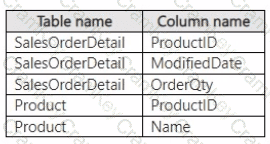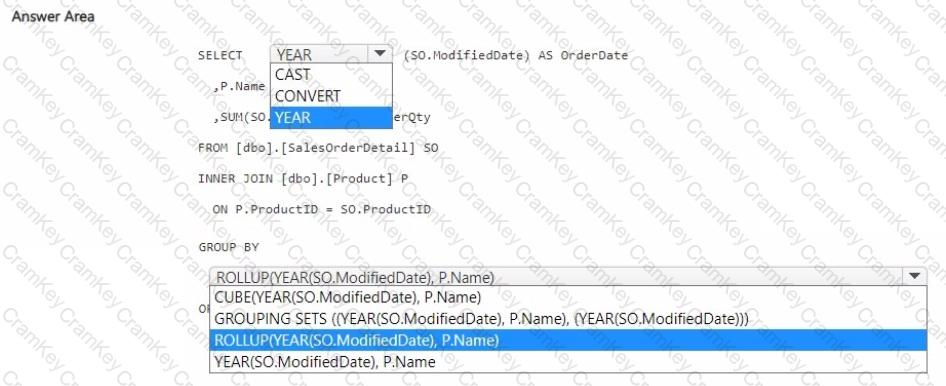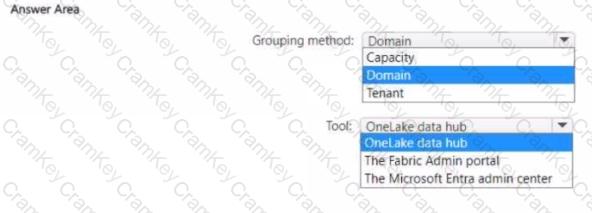| Exam Name: | Implementing Analytics Solutions Using Microsoft Fabric | ||
| Exam Code: | DP-600 Dumps | ||
| Vendor: | Microsoft | Certification: | Microsoft Certified: Fabric Analytics Engineer Associate |
| Questions: | 166 Q&A's | Shared By: | milan |
You have a Fabric workspace that contains a warehouse named DW1. DW1 contains the following tables and columns.

You need to summarize order quantities by year and product. The solution must include the yearly sum of order quantities for all the products in each row.
How should you complete the T-SQL statement? To answer, select the appropriate options in the answer area.
NOTE: Each correct selection is worth one point.

You have a Fabric tenant that contains a warehouse. The warehouse uses row-level security (RLS). You create a Direct Lake semantic model that uses the Delta tables and RLS of the warehouse. When users interact with a report built from the model, which mode will be used by the DAX queries?
You need to recommend which type of fabric capacity SKU meets the data analytics requirements for the Research division. What should you recommend?
You need to recommend a solution to group the Research division workspaces.
What should you include in the recommendation? To answer, select the appropriate options in the answer area.
NOTE: Each correct selection is worth one point.
